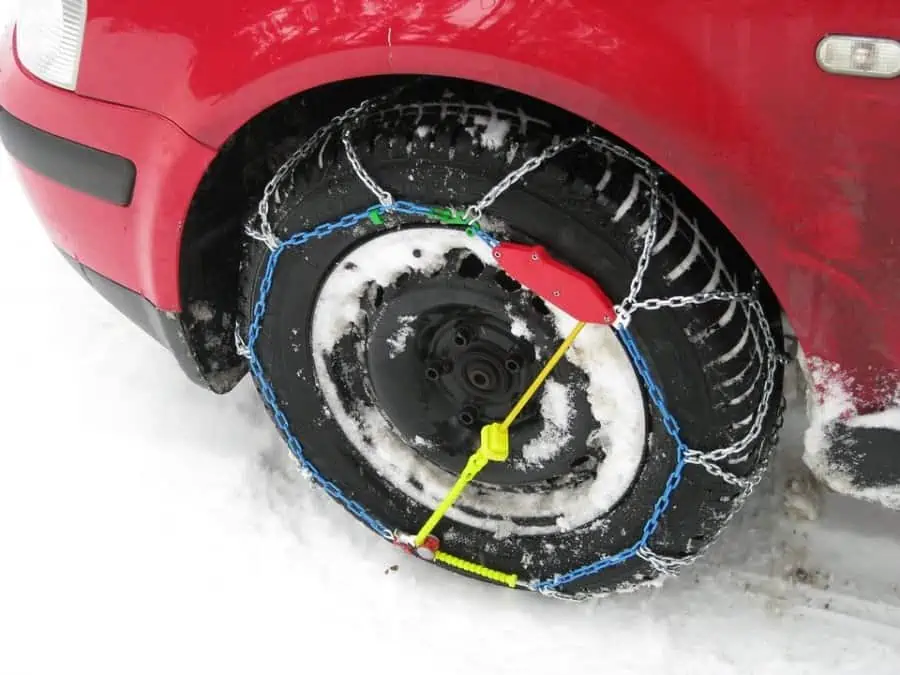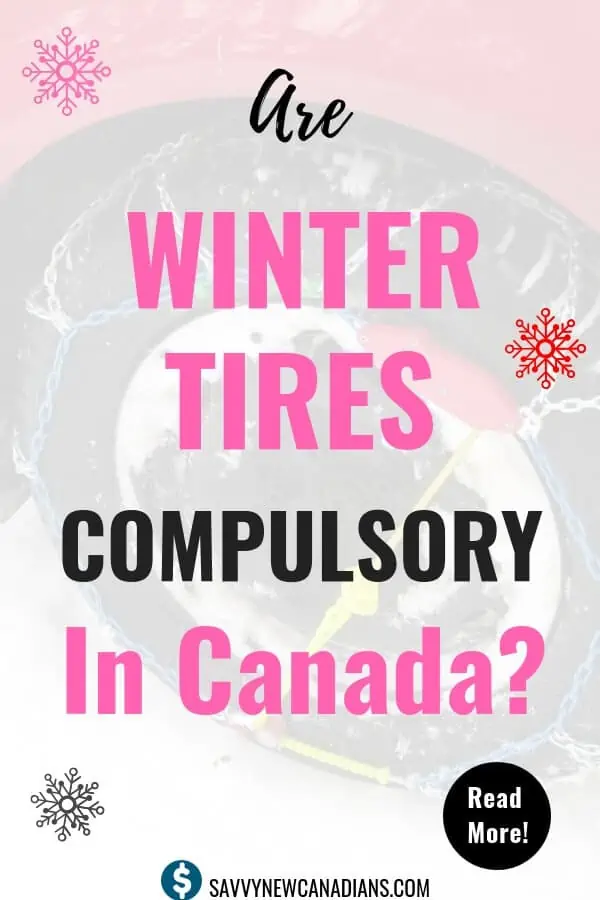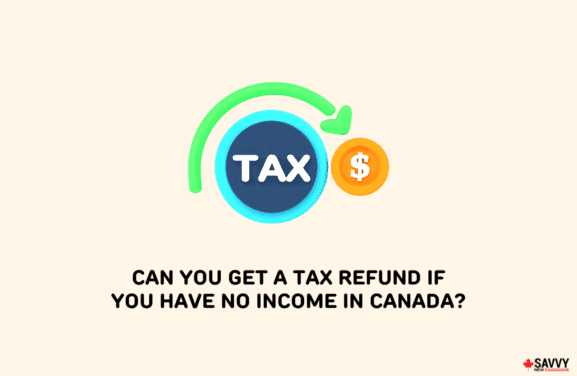While all-season tires can be used to navigate most weather/road conditions, they may not be adequate for extreme winter conditions. For these, winter tires are a necessity.
Winter tire laws in Canada are enforced in two provinces only, which are Quebec and British Columbia. Most other provinces and territories do not require these tires but give incentives to Canadians who use them.
Find out more about the laws on winter tires in different parts of the country.
Key Takeaways
- Quebec and British Columbia are the only two provinces in Canada that require the use of winter tires on certain months.
- Quebec requires the use of winter tires between October 15 and May 1 for vehicles weighing 3 tonnes or less, while British Columbia requires them on most roads between October 1 and April 30.
- The rest of Canada do not require winter tires but highly recommend them, with some offering incentives to encourage vehicle owners to use them.
Provincial Requirements For Winter Tires
All provinces in Canada recommend the use of winter tires, and in a few places, they are mandatory. There are also various guidelines and restrictions regarding the use of studs and chains on winter tires.
Quebec Winter Tire Law
The use of winter tires is mandatory in Quebec from December 1 to March 15. This requirement also applies to taxis, rental vehicles, mopeds, motorized scooters, and motorcycles.
The penalty for getting caught without them is a fine between $200 and $300 plus costs. A few exemptions may be applicable by obtaining a winter tire exemption certificate.
Studded tires are generally allowed between October 15 and May 1 for vehicles weighing 3 tonnes or less.
Emergency vehicles, farm tractors, and vehicles used for snow removal and winter maintenance are authorized to use tire chains during the same period.
British Columbia Winter Tire Law
Winter tires or all-season tires with the “M+S” symbol (mud and snow) are required on many BC roads between October 1 and April 30. Signs are posted on all roads where this is a requirement. The tires must have at least 3.5mm of tread depth.
Commercial vehicles travelling outside the Greater Vancouver and Greater Victoria areas are required to carry tire chains.
Studded tires are allowed from October 1 to April 30, and studs should not protrude more than 2mm from the tread or traction surface of the tire. Failure to comply with these requirements can result in a fine of $109.
Manitoba Winter Tire Law
Winter tires are not mandatory in MB.
The province has a Winter Tire Program that is aimed at encouraging residents to purchase winter tires by providing them with low-interest financing of up to $2,000 per vehicle.
Manitobans who are approved for winter tire financing can also finance the associated costs for rims, TPMS, mounting and balancing, wheel alignment, nitrogen fill, and more.
Studded tires are allowed between October 1 and April 30. There is no law requiring or prohibiting the use of tire chains.
Ontario Winter Tire Law
Winter tires are recommended for winter driving but are not mandatory. There is a requirement that insurance companies offer a discount to drivers who have winter tires on their vehicles. This discount can be as high as 5%.
Studded tires are allowed for vehicles in Northern Ontario between October 1 and April 30. Residents of Southern Ontario are prohibited from using studded tires.
New Brunswick Winter Tire Law
Winter tires are recommended but not mandated except for school buses which must have them on.
Studded tires are allowed from October 15 to May 1.
Winter Tire Laws in Canada
Winter tires are not mandated in these provinces and territories:
Alberta, Nova Scotia, Prince Edward Island, Saskatchewan, Newfoundland and Labrador, Northwest Territories, Yukon, and Nunavut
- Nova Scotia permits studded tires between October 15 and May 31. The studs must not protrude more than 1/8th of an inch from the tread or traction surface of the tire.
- Newfoundland and Labrador allow the use of studded tires from November 1 to April 30.
- PEI allows studded tires from October 1 to May 31. The studs must not protrude more than 3.2mm beyond the tread surface of the tire.
Related: How To Prepare Your Car For Winter

What’s the Difference Between Winter and All-Season Tires?
The main difference between winter and all-season tires is in the rubber compound used to make them.
Winter tires are made of softer rubber that remains flexible when temperatures drop and maintain a grip on the road. In addition, winter tires have deeper threads that allow for a bigger bite and traction on snow and ice.
How much difference does it make if you are driving on all-season tires vs. winter tires in wintry conditions? it can be a lot, as per numerous studies.
Tests done by Consumer Reports show that winter tires stop six (6) feet shorter on average than all-season tires when braking on ice.
Winter tires can be identified by a mountain snowflake symbol on their sidewall, which denotes that they meet recommended snow traction performance requirements.
Winter Tires FAQs
Some of the popular questions often asked about the use of winter tires include the following:
1. When Should I Install Winter Tires in Canada?
It is recommended you install your winter tires when temperatures start to dip below 7°C. It is at this temperature range and below that you start to notice the significant loss of braking power and traction with regular tires.
Once the weather warms up in spring, remember to remove them and replace them with all-season or regular summer tires.
2. How Do I Store My Winter Tires?
Your tires should be stored in a cool, dry place where they are protected from extreme heat and cold, such as in a garage or basement. To make sure you get the maximum longevity from your tires:
- Clean tires before putting them in storage
- Keep them out of direct sunlight
- Place them in an airtight plastic bag
- Store tires vertically
- Do not put them directly on the ground
3. Can I Get By With Just Two Winter Tires?
It is recommended that you change all four wheels to winter tires. Partial replacement with just two winter tires can actually worsen your driving experience and decrease performance.
4. What Is The Impact of Studs on Winter Tires?
Studs improve the grip and traction of winter tires, especially in treacherous conditions like black ice-covered roads and packed snow.
Although they come in handy in the most severe wintry conditions, they also have some disadvantages, including:
- They increase the road noise from your tires
- They may cause damage to roads and driveways
- They may pop out if not well installed
- Installing studs is an additional expense
5. Can I Use My Winter Tires All Year Round?
If they are not studded, there is no law preventing you from using your winter tires all year round. However, there are a few reasons why you should swap your winter tires for all-season or summer tires as soon as the weather warms up:
- Winter tires are softer and wear out faster in warm conditions, meaning you will need to replace them sooner
- Braking distance increases on dry and wet surfaces, making your driving less safe
- Your fuel consumption increases
Closing Thoughts
Winter tires are worth the additional expense for most regions in Canada. If you change them out promptly each season, you should be able to use them for 5 years or longer.
While winter tires will improve your vehicle’s driving performance, you should still drive with caution and in line with road conditions.
You May Also Like:
- 100 Easy Ways To Save Money Every Day
- 10 Ways To Save Money This Christmas
- 15 Best Survey Sites That Pay Canadians For Their Opinions
- 20 Easy Ways To Save Money Around The House
- 15 Ways To Lower Your Energy Bill in Winter
What are your thoughts on the different winter tire requirements in Canada? Leave your comments below!





Once upon a time winter tires really were not necessary. They used to be called “snow tires”, because the main benefit was that they gave better traction in deep snow.
The a funny thing happened. Actually, two funny things happened.
First, they started making better materials for cold weather, so that winter tires actually started performing better in sub-zero temperatures.
Then – and this is the sneaky part – all seasons started becoming less “all”. The material used in all season tires these days might be better than the old “summer tires” were in cold weather, but not as good as all-seasons used to be.
So, it’s worth going with winter tires…although I think when the weather reaches starts to dip below 7°C is a bit early. It was 6°C this morning.
@David Leonhardt: Thanks for stopping by! I have often wondered at how “all” seasons are being less advertised as “all weather.” Good point on the temperatures too, I don’t put up my winter tires until end of November when the temps are generally around freezing point here in Winnipeg.